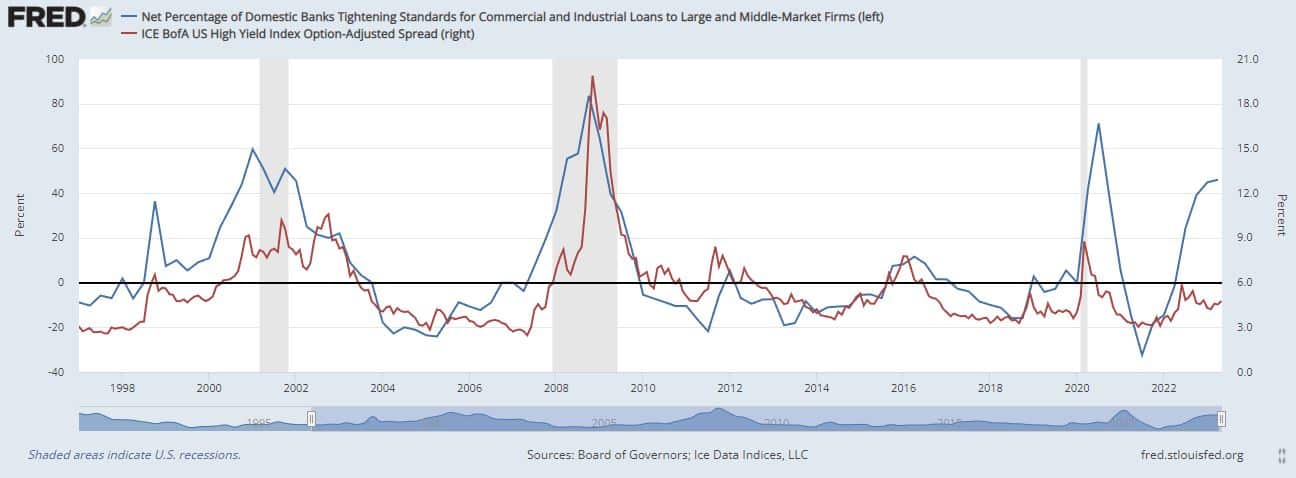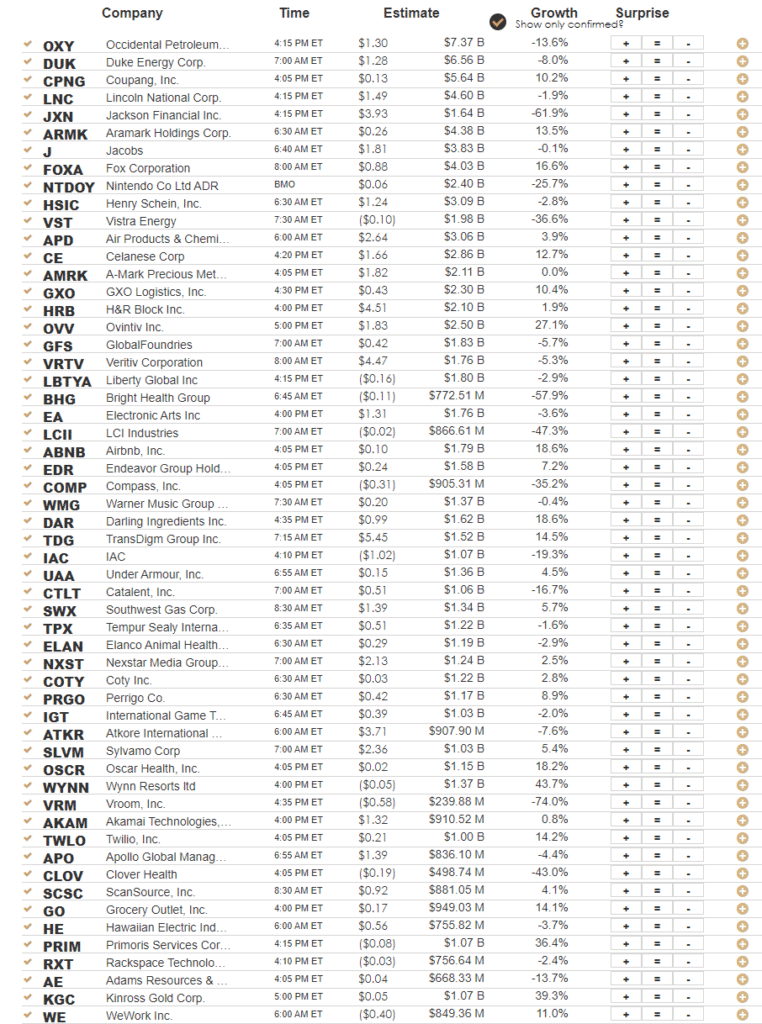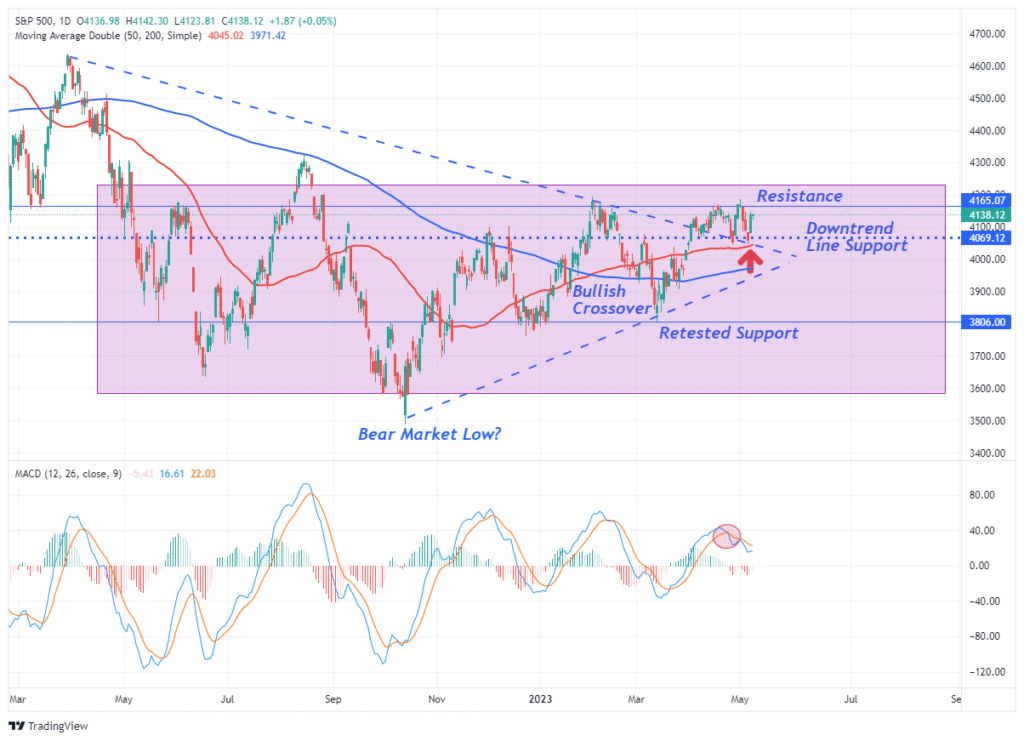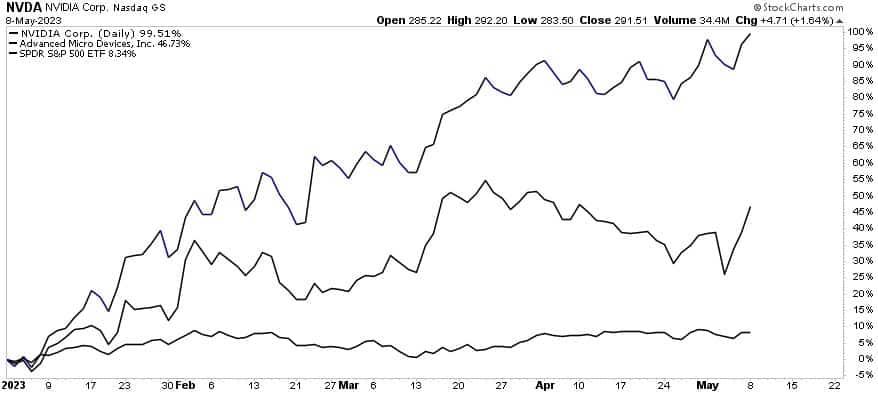The Fed’s Senior Loan Officer Opinion Survey on Bank Lending Practices (SLOOS) confirmed a widely expected tightening of bank lending standards in the first quarter. The share of banks with tighter standards on loans to medium and large businesses rose to 46% from 44.8% in the fourth quarter of 2022. Given the regional bank fallout in late March, the tightening of lending standards could have been worse. Meanwhile, demand for commercial and industrial loans weakened considerably. The survey reported the broadest share of banks with weaker loan demand since 2009.
The chart below shows the historical relationship between the SLOOS and high-yield credit spreads. Despite the rapid rise in interest rates and tightening lending standards, credit spreads remain relatively muted. In other words, banks adjust to heightened risk in loan portfolios, while bond investors still don’t show a sense of urgency. What gives?

What To Watch Today
Earnings

Economy

Market Trading Update
As I discussed in yesterday’s “Before The Bell,” the market has remained range bound since the beginning of February. This is despite the Fed hiking rates, bank crisis, etc. As shown, the sell signal remains intact, and as we stated previously, such suggests that the upside is limited. However, it does NOT mean the market has to sell off dramatically. Such has been the case that has frustrated the bears expecting a decline and the bulls trying to make money.
Eventually, this range will resolve itself with either a break to the upside or downside and the only problem is that we do not know which it will be. Plenty of valid arguments exist for both an economic recovery and a recession. Such makes it very difficult to manage money from a risk perspective in the short term. In such situations, it is often better to be patient and let the market tell us what to do next.


NVDA’s Massive Edge
Nvidia has been one of the greatest beneficiaries of the Artificial Intelligence hype this year. The stock’s share price has increased 100% YTD, doubling the return of its closest competitor, AMD. So, given the market-wide excitement about AI and inevitable competition down the road, why has the stock offered such a stark outperformance? For one, it’s the leading provider of advanced GPU chipsets, the backbone of machine-learning models. Given this is a highly technical space with tighter standards than most industries, having a first-mover advantage is highly valuable. Beyond this, NVDA is cementing another competitive advantage: switching costs. According to Bernstein semiconductor analyst Stacy Ragson on Bloomberg’s OddLots Podcast:
Now, what Nvidia has done on top of this, not only with having the hardware, is they’ve also built a really massive software ecosystem around all of this. Their software is called Cuda. Think about it as kind of like the software, the programming environment. Like the parallel programming environment for these GPUs. And they’ve layered on all kinds of other libraries and STKs and everything on top of that, that actually makes this relatively easy to use and to deploy and to deliver.
And so they’ve built up not just the hardware, but also the software around this. And it’s given them a really, really sort of like massive gap versus a lot of the other competitors that are now trying to get into this market as well.
For companies who have spent tens of millions building data centers with NVDA’s chips and learning to operate within the Cuda environment, they now have significant switching costs. This gives NVDA pricing power down the road, leading to higher operating margins than its competitors. While NVDA’s outperformance this year may seem outrageous, its competitive advantage in this new frontier is just as outrageous- and it might even justify the lofty valuation.

Market Breadth Like This May Spell Trouble
As we wrote last Monday, the market has rallied this year on bad breadth. The chart below illustrates the divergence. The Vanguard Mega Cap Growth ETF (MGK) is up nearly 22% this year, the broader index is up only 8.3%, and an equal-weighted index is up just 1.5%. In other words, a handful of stocks have driven most of the gains. BTIG analyst Jonathan Krinsky looked at the historical record and noted that similar breadth tends to appear near market peaks:
Krinsky found that, going back to 1990, there have been 29 instances where the S&P 500 has traded above its 200-DMA for at least 34 sessions.
Market breadth has only been weaker during two of those occasions, Krinsky found. By now, 69% of S&P 500 constituents have typically moved above their 200-DMAs, according to Krinsky.
What might this mean for stocks? Krinsky found some evidence to support his view that stocks are likely headed lower. For example, four of the six periods where breadth was the weakest occurred near market peaks, including in December 1999, July and September 2000, and October 2007.

Amazon Takes Aim at Delivery Costs
Amazon (AMZN) is looking for more ways to cut costs as it shifts to tighter operating standards following a massive expansion. The company has previously announced several rounds of layoffs this year. This time, it aims to reduce delivery costs by offering customers compensation to use pickup points instead of home delivery. Per Investing.com,
“Amazon over the last few days has emailed an unknown number of Prime subscribers offering them $10 to retrieve an order of $25 or more at company pickup points at locations such as Whole Foods, Amazon Fresh or Kohl’s (NYSE:KSS) stores.”
Tweet of the Day

Please subscribe to the daily commentary to receive these updates every morning before the opening bell.
If you found this blog useful, please send it to someone else, share it on social media, or contact us to set up a meeting.
Post Views: 2
2023/05/09




